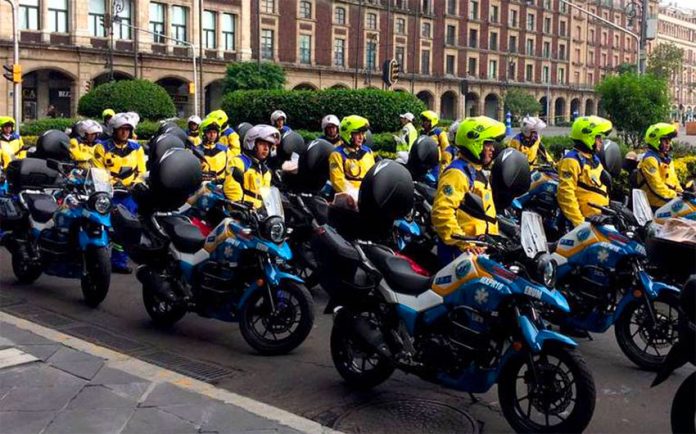Paramedics may soon be weaving through Mexico City’s notorious stand-still traffic aboard motorcycles, delivering emergency care in as little as 10 minutes.
Mexico City Mayor Claudia Sheinbaum told a press conference that the city will invest 20 million pesos (US $1 million) in 73 motorcycle units and 50 traditional ambulances by 2020. Yesterday, she gave the green light for 40 moto-ambulances — 30 for the medical emergencies and rescue team and 10 for the Red Cross — to be assigned to posts in the capital’s 16 boroughs.
The mayor said the city government hired and certified 97 emergency medical technicians trained in essential life support to pilot the motorcycles with the goal of having 35 motorcycle units and 27 regular ambulances available for every emergency shift.
Additionally, the motorcycles will be equipped with a defibrillator, oxygen tanks and other emergency life support tools to stabilize a patient’s condition or give vital pre-hospital care while waiting for a regular ambulance to arrive. According to authorities, moving a patient is not actually necessary in 60% of 911 calls in Mexico City.
The director of the C5 emergency system said that 911 dispatchers will communicate to emergency medical crews whether each emergency warrants a motorcycle technician or a traditional ambulance. Juan Manuel García said the motorcycle crews will reduce saturation in hospitals and deliver life-saving care in a much shorter time.
“If we have enough ambulances and emergency services, much of the time we can treat a patient on site if it is not too serious, and in that way avoid saturating emergency care units in hospitals. The second advantage is that it decreases the emergency response time and saves live. When I got here, the average response time was 45 minutes, but now, thanks to strengthening the dispatchers’ ranks with doctors and regionalization [of emergency responders], we have brought the average response time down to 35 minutes.”
Sheinbaum added that with the new motorcycle units and new hires of additional paramedics and volunteers, she hopes to bring the average emergency response time down to 10 minutes by 2020.
Source: Milenio (sp), El Sol de México (sp)
